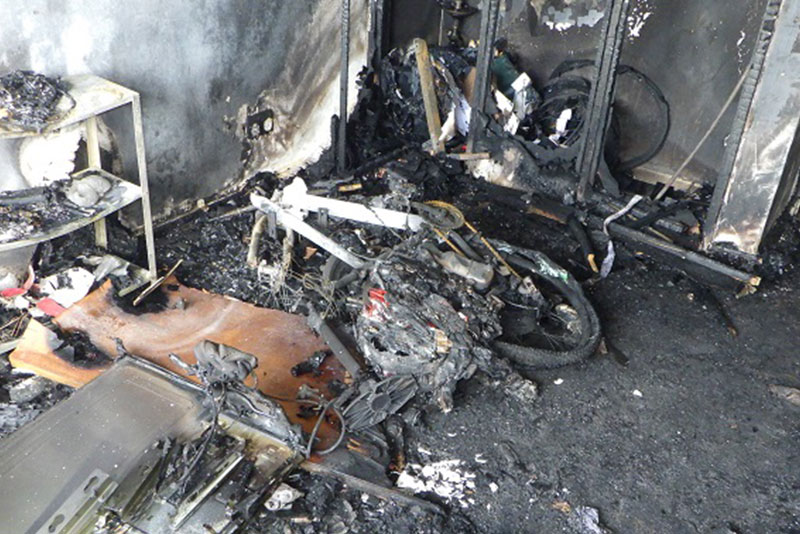
London Fire Brigade (LFB) firefighters have issued an urgent e-bike safety warning following a serious blaze at a block of flats in Shepherd’s Bush on 22nd June.
LFB said, “at the height of the incident, 60 firefighters were tackling the fire in a 12th floor flat. Fire crews led six people to safety and one man was taken to hospital.” The blaze was investigated by the Brigade’s fire investigators who have determined the blaze was accidental and caused by the failure of an e-bike lithium-ion battery.
The new widespread adoption of electric personal modes of transport has also been accompanied by a worrying increase in fires, London’s firefighters have seen a huge spike in incidents caused by these electric modes of transport. Just this year, crews have already attended 32 fires involving e-bikes and another 7 involving e-scooters. So far in 2022, there have been a further 17 fires involving other lithium-ion batteries and last year, in total there were more than 100 fires in the capital involving this type of battery.
The Brigade’s Assistant Commissioner for Fire Safety, Charlie Pugsley, said: “It’s incredibly concerning that we are continuing to see a rise in incidents involving e-bikes.
The advice from the Brigade is to never store e-bikes or e-scooters in communal areas as if they are involved in a fire, it can easily block the only means of escape.
If you are an e-scooter or e-bike owner living in London, Transport for London (TfL) banned e-scooters and e-bikes from the network at the end of 2021 following an incident in November which saw an e-scooter catch fire on a train stopped at an underground station.
How can you prevent or reduce the impact of an e-scooter or e-bike lithium battery fire?
- Buy branded electric scooters and bikes and their accessories only from reputable sources.
- Don’t overcharge your e-scooter or e-bike. Avoid leaving your machine on the socket unattended, and also remember to use the correct charger. Using a generic charger as opposed to the manufacturer’s official charger is not advised.
- Don’t use batteries that have been punctured, crashed, dropped, or damaged.
- Avoid leaving your e-scooter in areas with extreme temperatures such as leaving it out in the sun all day long or putting it in the kitchen.
- Leave a time interval between riding, charging, and riding again. After use, particularly prolonged use, the battery will already be hot – charging it straightaway will heat it further, risking damage. Likewise, after charging a battery will be hot, so immediately using it will also risk overheating.
- Charge in a safe location. Avoid charging in the house – if you have a garage or outbuilding use this as even if a fire occurs you are more likely to escape, and the damage be limited. If you can’t do this (e.g., in a flat) then avoid charging overnight and do not charge where a fire would come between you and the exit – for example charging in a hallway could trap (and possibly lead to the death of) everyone in the flat regardless of which room they are in.
We would like to remind you that e-scooters and e-bikes are very hazardous if they do catch fire. To learn more about lithium-ion battery fires please visit our Lithium Battery Range Website where you can find out why these are a fire risk and what causes a lithium-ion battery fire.
Image courtesy of London Fire Brigade.
The Firechief range includes high-performance fire extinguishers, fire blankets, first aid kits, lithium-ion fire extinguishers for your home and leisure time. For more information, call us on +44 (0)330 999 0019 or email sales@firechiefglobal.com.
The information contained within this blog is provided solely for general informational and educational purposes and is not intended as a substitute for professional advice. Before taking any actions based upon this information, we advise the reader to consult any and all relevant statutory or regulatory guidance and where felt necessary to consult a qualified fire or industry regulation professional. The use or reliance on any information contained herein is solely at the reader’s risk.

